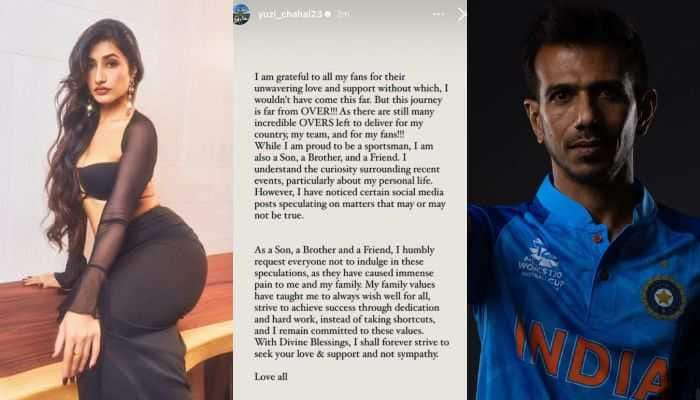Gender affirmation: Why SEX-CHANGE surgeries are a liberating affair
Born as a male, Nnyra was identified with gender incongruence, in which a person is in constant conflict with the sex he or she is born in.
Trending Photos
)
New Delhi, Dec 18 (PTI) How does it feel to know that your body does not belong to you? Trapped, suffocating, frustrating!
This is how 25-year-old Nnyra, a trans woman, felt for almost 24 years till she underwent a gender affirmation surgery that helped her get a body she could identify with.
Born as a male, Nnyra was identified with gender incongruence, in which a person is in constant conflict with the sex he or she is born in.
In gender incongruence, one fails to identify with the gender assigned to them during birth. These individuals are at conflict with their parents, siblings, peers and the society at large, resulting in minority stress and discrimination, which lead to severe distress.
"The condition has a definite neurologic, genetic and hormonal basis," Dr Richie Gupta, director and HoD, Plastic, Aesthetic, Reconstructive Surgery and Gender Affirmation Clinic at the Fortis Hospital in Shalimar Bagh here, told PTI.
Despite not getting support from the family members and facing societal stigma, Nnyra underwent the gender affirmation surgery to become a female both in mind and body.
She was put on feminising hormone therapy in 2020 and underwent vaginoplasty, a procedure by which her vagina was constructed, in June.
She then underwent a breast augmentation surgery in August.
"I felt suffocated in a male body. Some mornings, I would wake up and feel like scratching my skin off and just get rid of the man's body. My parents never understood what I was going through," she recalled.
With time, Nnyra said as she became vocal about her identity, her relatives and others were unable to accept it.
"They took me to religious institutions and psychiatrists as they felt I needed to be cured of what they considered a disease. Finally, I decided to undergo the procedure, which was when I was asked to leave the house. My journey so far has been very difficult," Nnyra said.
She said though her struggle is not over after the surgery as her body is still balancing out the interventions, she is at peace with herself and comfortable in her body.
As for 24-year-old Amrit, he underwent the tedious and almost a nine-year-long procedure that involved psychological counselling followed by hormone therapy and mastectomy to remove the breasts and finally, a flap surgery in November to give him the male organ.
A flap was taken from his forearm for making the male organ and Amrit is still recovering and is back in his home town in Maharashtra.
Amrit said he was put on masculinising hormone therapy in 2020, after which his voice became deeper and he could start growing a beard.
"I felt trapped in a female body. I could never look at myself nude in the mirror. I also had a liking for women. I thought no one in my family would understand me, that is why I could not talk to them," he said.
"I came to know about the procedure through which I could get the body of a male and approached Dr Richie Gupta," he said. In 2020, when Amrit finally told his family, they accepted his decision.
"After the mastectomy, on a trip to goa this year, I rode a bike without my shirt on and that felt liberating," he said.
According to doctors, fighting odds such as family opposition and societal norms, more people having gender incongruence are coming forward to undergo gender affirmation surgeries to get the body in sync with the mind. Dr Richie Gupta said when he had started performing these procedures around 20 years ago, he would only get five-six patients a year, a figure that has now gone up to around 250.
Dr Rajat Gupta, senior consultant, Department of Plastic, Aesthetic, Reconstructive Surgery and Gender Affirmation Clinic at the Fortis Hospital in Shalimar Bagh, said generally, male-to-female transitioning individuals undergo two core procedures, which include breast augmentation by silicone implants or fat grafting and feminising genital GAS (FGGAS -- vaginoplasty as well as formation of organs such as clitoris, labia majora and minora, mons and vestibule, and feminine urethral meatus).
In addition, some ancillary surgeries may be performed as needed. These include facial feminisation surgery, rhinoplasty, hair transplants and forehead shortening, Adam's apple removal, feminising voice surgery, body contouring, laser hair removal etc., Dr Rajat Gupta explained. Female-to-male transitioning individuals generally undergo three core surgeries -- bilateral breast reduction, removal of female internal organs and phalloplasty (penile reconstruction). Phalloplasty is commonly done by using tissues from the forearm, thigh, back or abdomen. The ancillary surgeries include insertion of erectile and testicular prosthesis, facial masculinisation, voice surgery, body contouring etc.
"Gender affirmation surgeries help in the assimilation of these individuals in their new gender role, as well as the society, thus relieving their distress and helping them achieve congruence," Dr Rajat Gupta said.
According to Dr Richie Gupta, gender affirmation surgeries enable an individual to get the desired body and also experience orgasms and penetrative sexual intercourse with the opposite sex, but they cannot produce children.
However, current advanced reproductive technologies allow preservation of patients' sperms and ova prior to the start of hormone therapy and surgery, so that later, they can have biological children.
Another story of courage is that of Amy Chauhan, who works as a corporate human resource manager at a private firm. She completed the procedure of transitioning from male to female in September 2019.
After an accident at the age of seven, she had both her legs amputated.
"I started crawling and used a tricycle for everyday travel. I was compelled to study from home," Chauhan said. Coming from a disadvantaged background, Chauhan had to face a lot of struggle to complete her education and says her challenges did not end there.
"I was uncertain about my identity for years. I liked to dress up like a girl. When I came across the LGBTQ+ community, I learnt about the hormone therapy and started the process of transitioning to the opposite sex," she said. Hurdles and opposition from the society that stood in her way could not deter her from undergoing the gender reassignment procedure.
(The above article is sourced from news agency PTI. Zeenews.com has made no editorial changes to the article. News agency PTI is solely responsible for the contents of the article)
Stay informed on all the latest news, real-time breaking news updates, and follow all the important headlines in india news and world News on Zee News.
Live Tv







)
)
)
)
)
)
)
)
)
)
